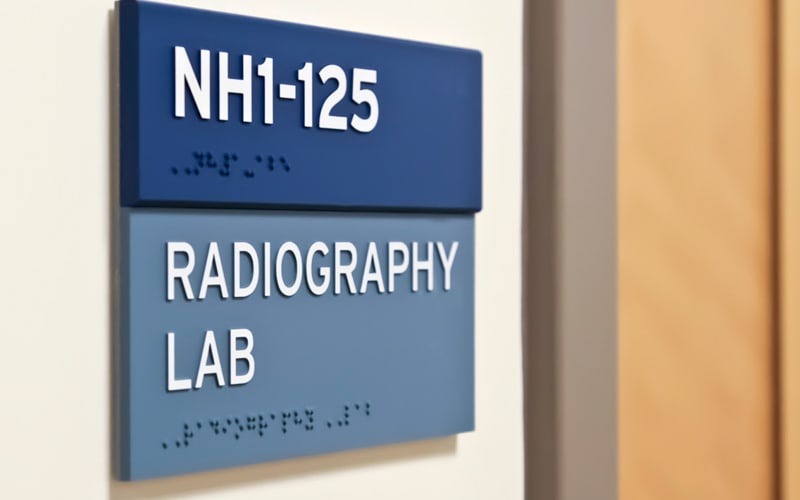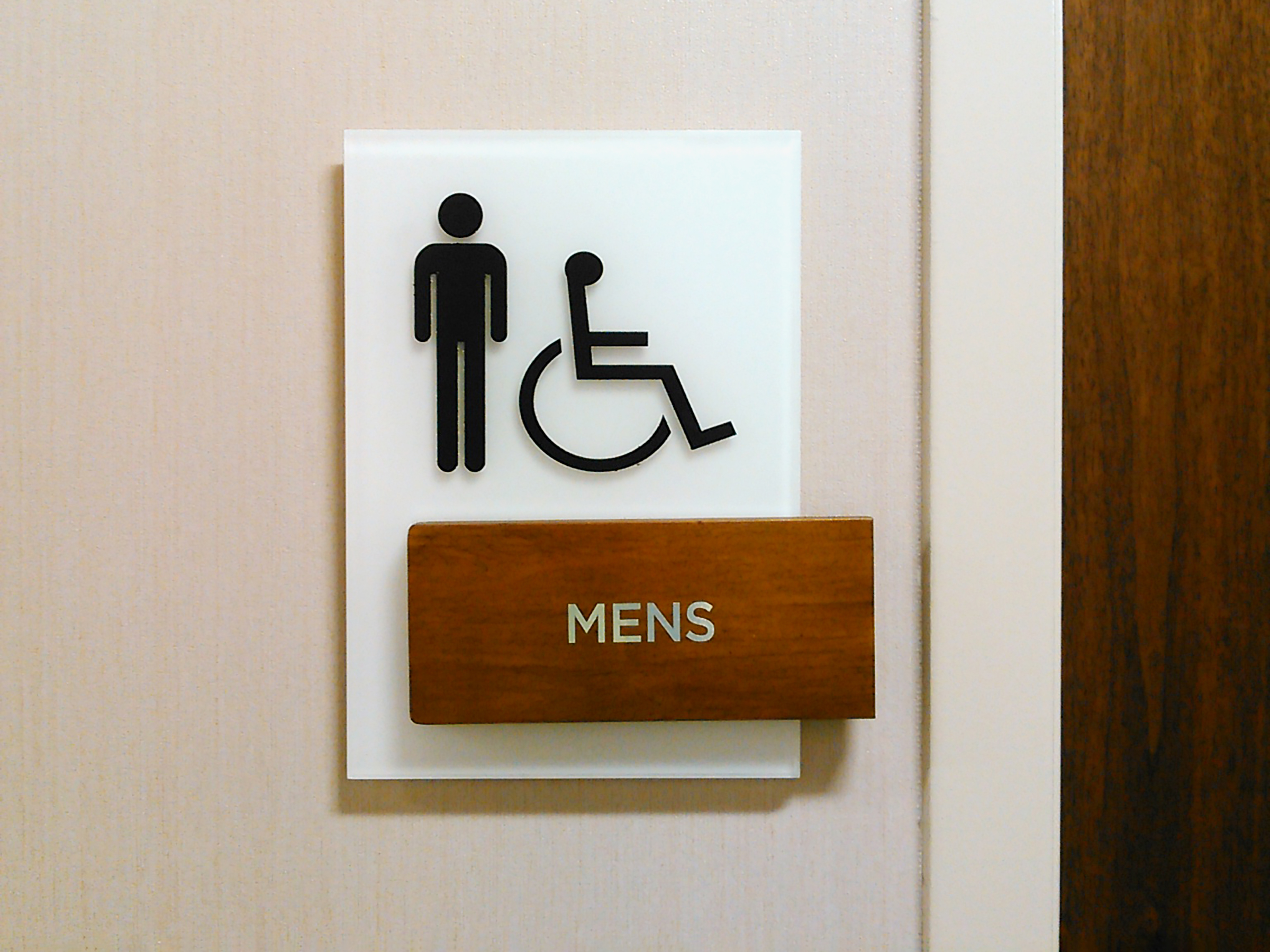A Comprehensive Overview to Picking the Right ADA Signs
A Comprehensive Overview to Picking the Right ADA Signs
Blog Article
Discovering the Key Features of ADA Signs for Boosted Availability
In the world of ease of access, ADA indications act as silent yet effective allies, ensuring that rooms are inclusive and accessible for individuals with handicaps. By integrating Braille and responsive components, these indicators damage obstacles for the aesthetically damaged, while high-contrast color pattern and legible typefaces satisfy diverse visual needs. Their calculated placement is not arbitrary however rather a computed effort to help with smooth navigation. Yet, past these attributes exists a deeper narrative regarding the development of inclusivity and the continuous dedication to creating equitable areas. What more could these indicators symbolize in our pursuit of global access?
Relevance of ADA Compliance
Ensuring conformity with the Americans with Disabilities Act (ADA) is essential for fostering inclusivity and equivalent gain access to in public areas and workplaces. The ADA, enacted in 1990, mandates that all public facilities, employers, and transportation solutions fit people with impairments, ensuring they take pleasure in the exact same rights and possibilities as others. Conformity with ADA criteria not just fulfills legal commitments yet likewise enhances a company's track record by showing its dedication to diversity and inclusivity.
One of the essential elements of ADA compliance is the execution of easily accessible signs. ADA indications are made to make sure that people with handicaps can conveniently browse with structures and spaces.
In addition, adhering to ADA laws can reduce the risk of lawful consequences and possible penalties. Organizations that fall short to follow ADA guidelines might deal with claims or fines, which can be both damaging and monetarily difficult to their public picture. Thus, ADA conformity is indispensable to fostering an equitable atmosphere for every person.
Braille and Tactile Aspects
The consolidation of Braille and responsive components right into ADA signage personifies the principles of ease of access and inclusivity. It is normally positioned underneath the matching text on signs to guarantee that individuals can access the info without aesthetic aid.
Tactile components prolong beyond Braille and include increased personalities and symbols. These components are created to be discernible by touch, allowing people to determine area numbers, washrooms, departures, and various other critical locations. The ADA establishes particular standards pertaining to the size, spacing, and placement of these responsive elements to optimize readability and ensure consistency across different environments.

High-Contrast Color Schemes
High-contrast color pattern play an essential duty in boosting the exposure and readability of ADA signs for people with visual impairments. These systems are important as they make best use of the distinction in light reflectance in between message and history, making certain that indicators are conveniently discernible, even from a range. The Americans with Disabilities Act (ADA) mandates using specific shade contrasts to fit those with restricted vision, making it an essential aspect of compliance.
The efficiency of high-contrast colors hinges on click here to find out more their ability to stick out in numerous lighting problems, consisting of poorly lit settings and areas with glare. Normally, dark message on a light history or light text on a dark history is employed to accomplish ideal contrast. For example, black message on a yellow or white background gives a plain visual difference that assists in fast acknowledgment and understanding.

Legible Fonts and Text Dimension
When considering the layout of ADA signs, the selection of legible fonts and suitable text size can not be overemphasized. These components are critical for guaranteeing that signs come to people with aesthetic problems. The Americans with Disabilities Act (ADA) mandates that fonts must be not italic and sans-serif, oblique, script, very ornamental, or of uncommon type. These demands assist guarantee that the text is quickly understandable from a range which the personalities are appreciable to varied target markets.
According to ADA guidelines, the minimal message elevation need to be 5/8 inch, and it must enhance proportionally with seeing range. Uniformity in message dimension contributes to a cohesive visual experience, assisting individuals in navigating settings efficiently.
Furthermore, spacing in between lines and letters is important to legibility. Sufficient spacing protects against characters from showing up crowded, enhancing readability. By sticking to these standards, developers can substantially boost availability, guaranteeing that signage offers its desired purpose for all individuals, despite their aesthetic capacities.
Reliable Positioning Strategies
Strategic positioning of ADA signs more info here is necessary for maximizing accessibility and ensuring compliance with lawful criteria. ADA standards state that signs should be mounted at an elevation in between 48 to 60 inches from the ground to ensure they are within the line of sight for both standing and seated people.
Furthermore, indicators should be put surrounding to the latch side of doors to allow very easy identification prior to entry. Uniformity in sign positioning throughout a center enhances predictability, lowering confusion and improving total individual experience.

Final Thought
ADA indications play an important role in promoting availability by incorporating attributes that resolve the needs of people with handicaps. These elements collectively foster an inclusive environment, underscoring the importance of ADA conformity in making certain equivalent gain access to for all.
In the realm of ease of access, ADA signs offer as quiet yet powerful allies, guaranteeing that spaces are accessible and comprehensive for people with handicaps. The ADA, passed in 1990, mandates that all public facilities, employers, and transport services accommodate people with disabilities, ensuring they appreciate the exact same legal rights and opportunities as others. ADA Signs. ADA indicators are created to guarantee that people with specials needs can easily browse with buildings and rooms. ADA standards state that signs must be installed at an elevation between 48 to 60 inches from the ground to guarantee they are within the line of view for both standing and seated individuals.ADA indications play a vital duty in promoting access by integrating attributes that deal with the demands of individuals with specials needs
Report this page